See how our kitchens have been brought to life in our customers' homes.

We explain what the kitchen triangle is, why it is an important element of kitchen design and how to achieve it in your kitchen.
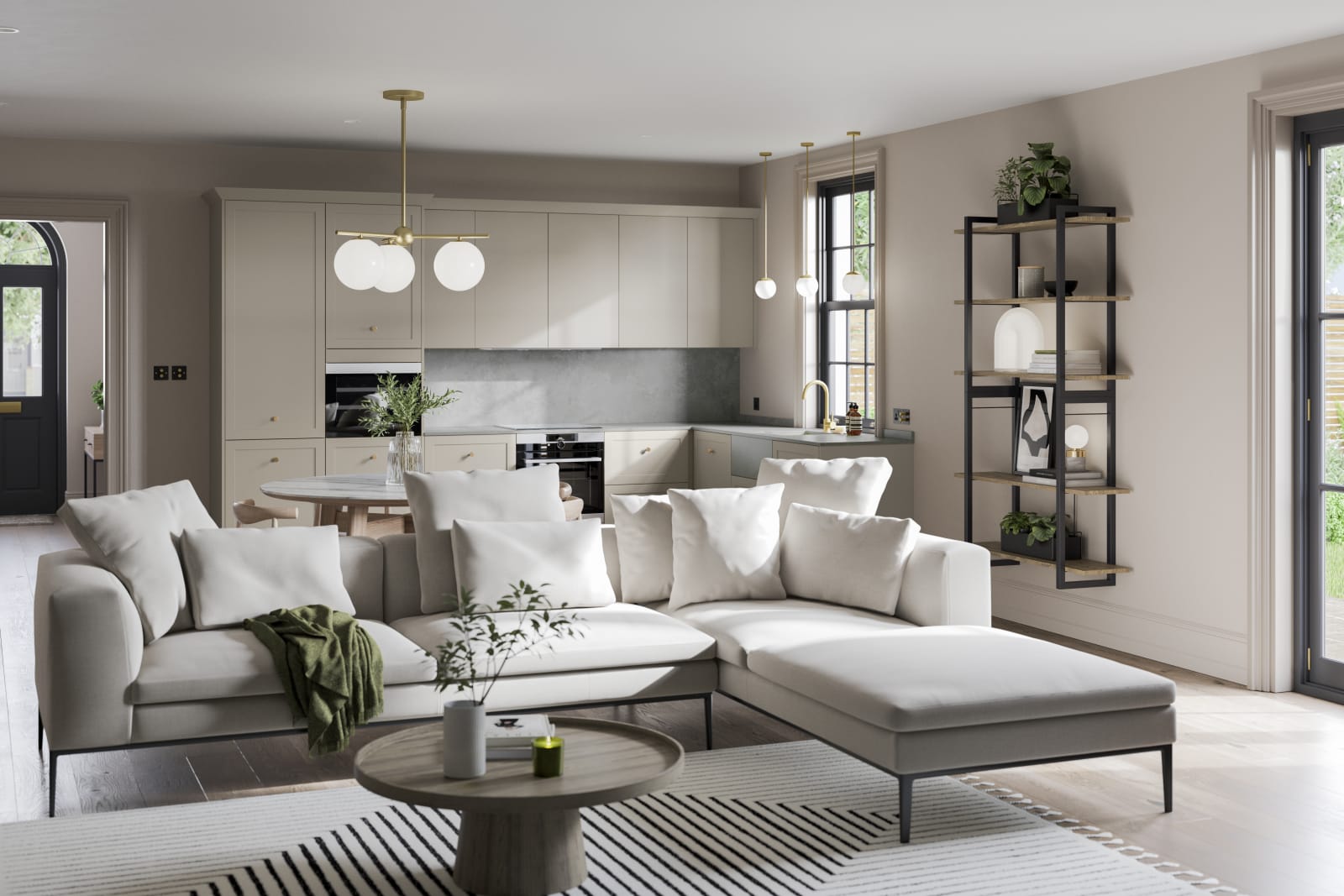
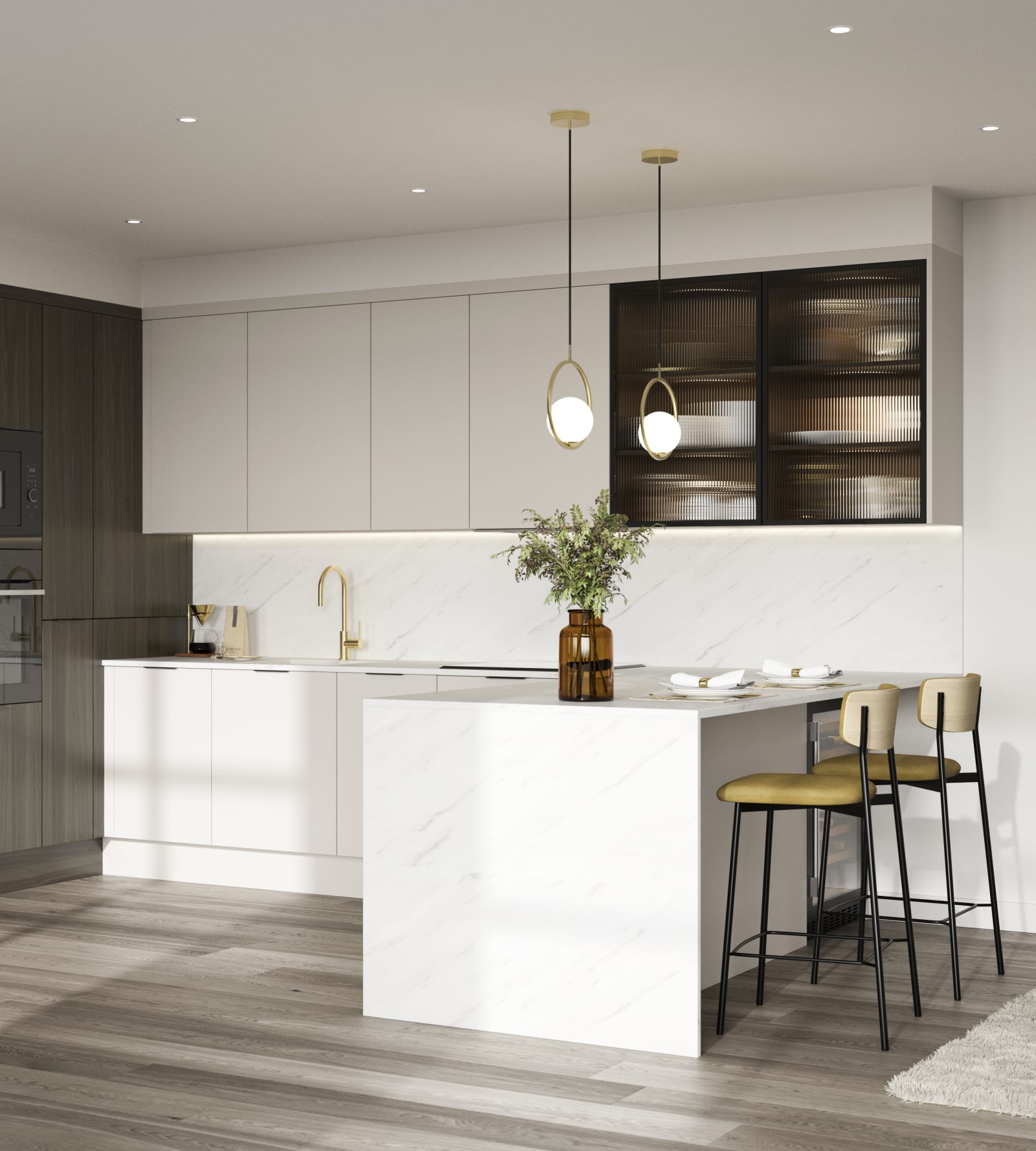
The kitchen triangle - also known as the ‘working triangle’ or the ‘golden triangle’ - is a design theory often used to create a sense of flow in our kitchens. Dating back to the 1940s, this theory is still as relevant today, and could help you make more efficient use of your space.
As the kitchen is often the heart of the home, optimising its layout and making it more functional is something that most of us strive for. If you’re looking for a proven way to make your kitchen design more conducive to family life, the working triangle could be a useful rule to follow.
The core principles of the kitchen working triangle are based on the placement of the most used or most important kitchen work areas.
The goal is to achieve a layout that makes performing everyday tasks easy, creating seamless movement between appliances that’s free from obstruction.
Originally developed by the Illinois School of Architecture as a way to cut costs in construction, this handy design rule still benefits homes today. While our lifestyles are no longer the same as they were in the 1940s, the triangle remains an important consideration for kitchen designers.
Some would say that due to how kitchens have evolved, the rule is perhaps a little outdated. Our kitchens are much more than just places to cook and prepare meals, after all - they are now sociable dining areas, places to relax, entertain, or even work.
However, efficiency of movement is still something to keep in mind, no matter what style of kitchen you go for.
The working triangle is the best starting point for most people, and can often be a helpful guide in planning your space.
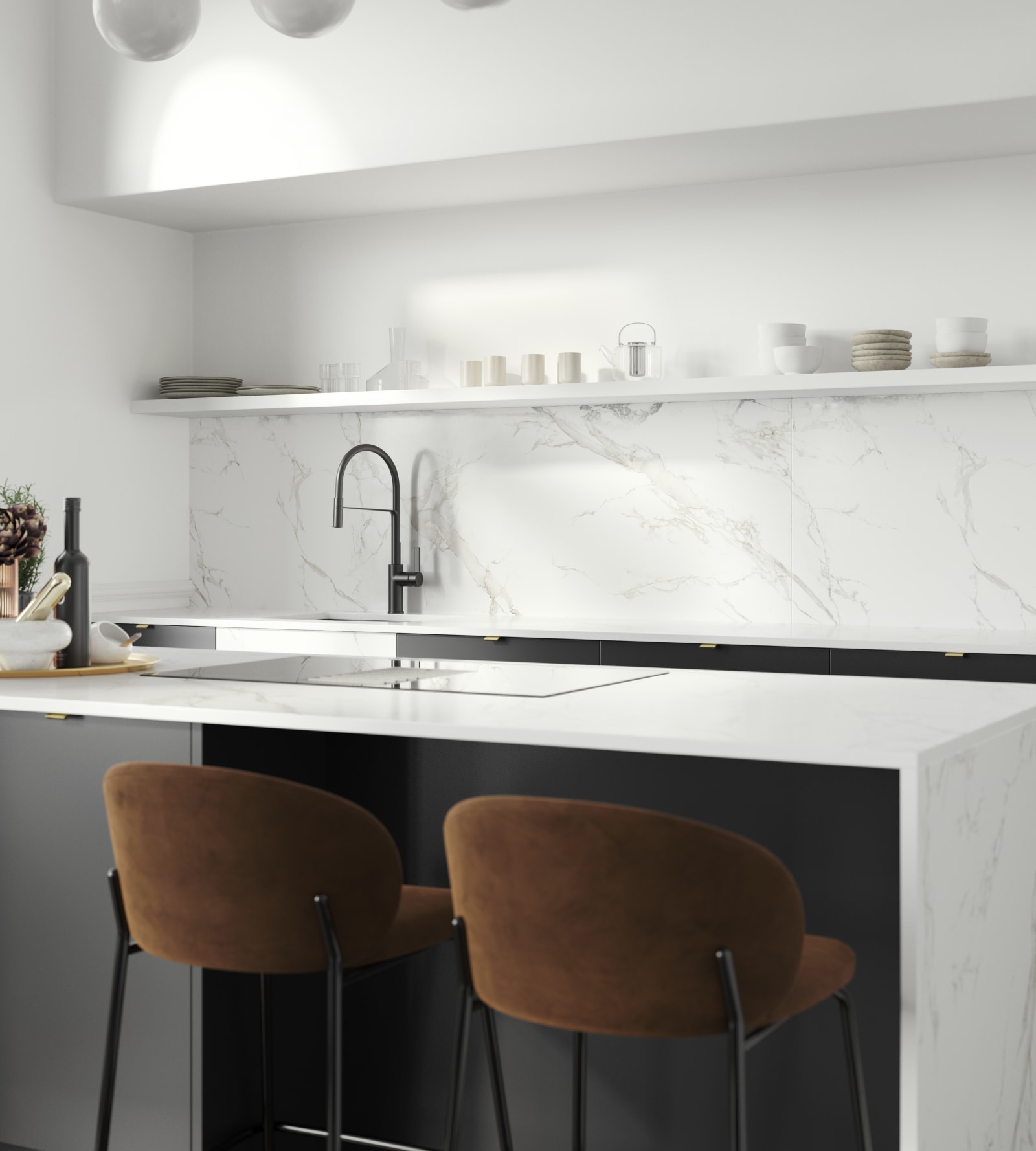

The working triangle in kitchen design is made up of three main workstations/appliances. These are the sink, the refrigerator, and the cooker.
Covering the three most important functions of the kitchen (cooking, storage and cleaning), these workstations are arranged in a loose triangle to ensure there’s a short enough walking distance between each one.
In busy family kitchens where meals are prepared several times a day, the triangle can be an invaluable tool. By placing your sink, fridge and oven/hob in an efficient triangle shape, you can reduce the time it takes to walk back and forth to/from key appliances when cooking for the family or entertaining.
If you’re lucky enough to have a large and spacious kitchen, the triangle can be used to help designate entire zones within the space - such as the prep zone, the cook’s zone, and the washing-up zone.
This provides easy guidance on where other important appliances and features should be, such as extra pantry space, utility area, or a dishwasher.
The rule of the kitchen triangle is that the total perimeter should be a minimum of 13 feet (3.9 metres) and a maximum of 26 feet (7.9 metres).
At the most, there would be just over 8 feet (2.4 metres) between each workstation in the golden triangle. At the least, there would be just over 4 feet (1.2 metres) between the workstations.
But the measurements you choose will depend on your kitchen size. The general rule of thumb is that the area shouldn’t be too big or too small.
But really, the most important factor for a kitchen that looks beautiful and feels functional is flow.

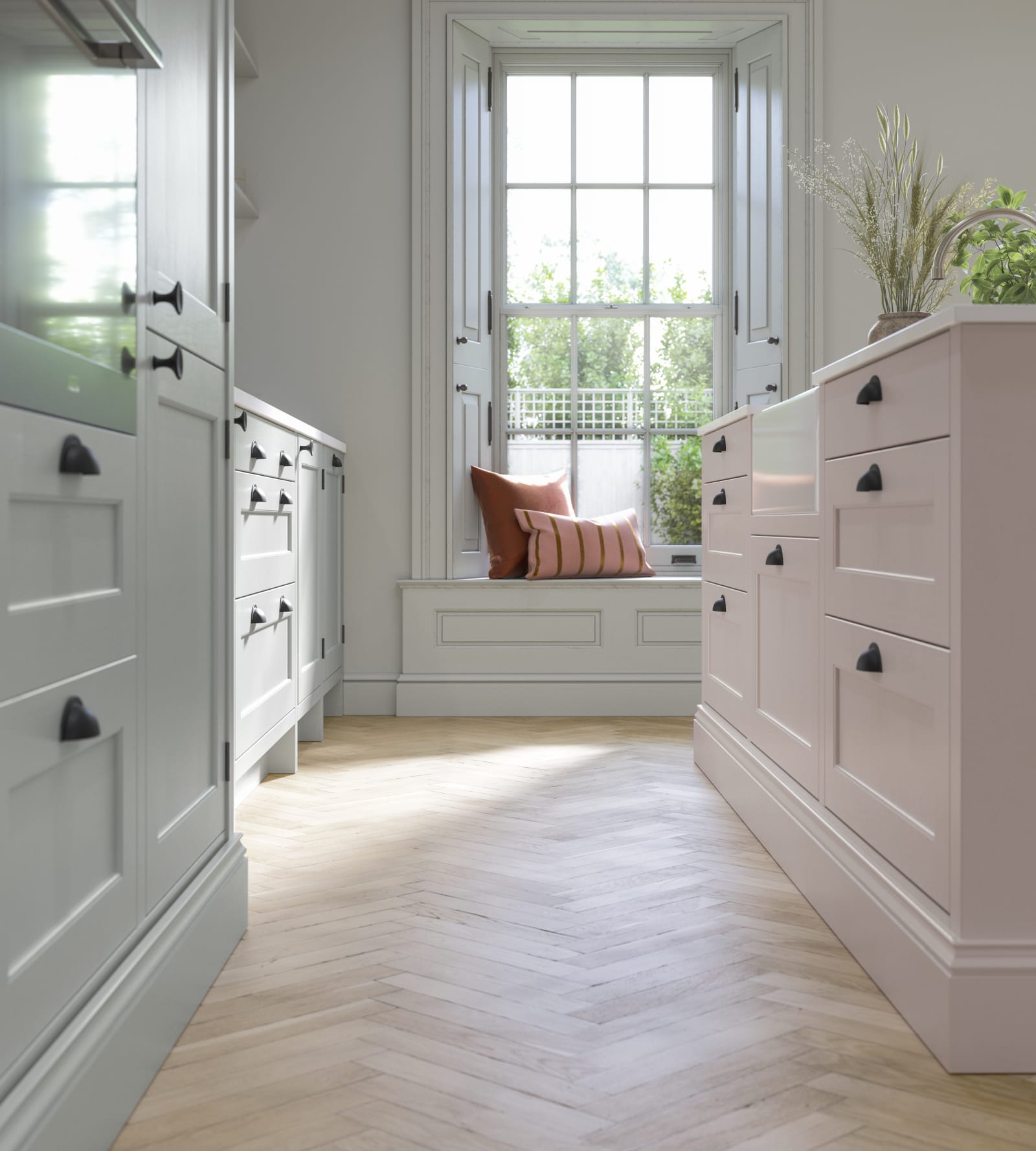
According to this design theory, it’s important to have a clear central area within the triangle, and this means avoiding things that could block the flow of movement. Typically, this includes tables or kitchen islands. But optimising the working triangle in kitchens with an island is entirely possible.
An island can act as a very useful placement zone for a sink, hob or under-counter fridge. If you want to install an island while adhering to this proven functional layout, consider the placement of water inlets, power sockets and extractor fans carefully when planning your kitchen design.
For the average home, using the kitchen working triangle theory can help create a practical, comfortable and aesthetically pleasing space for the whole family - not just the chef. How well organised your kitchen is affects how beautiful it looks and feels, after all.
But as our dedicated designers will tell you, there needs to be a certain amount of flexibility with kitchen design, particularly when working with tight spaces.
For instance, a small U-shaped or galley kitchen is ideal when you need to think ergonomically. For these kitchens, you can apply the same principles of triangular placement.
But if you have a one-wall kitchen, some extra considerations will need to be made for achieving the golden ratio. If space allows, it could be worth adding an island to make the kitchen more functional.
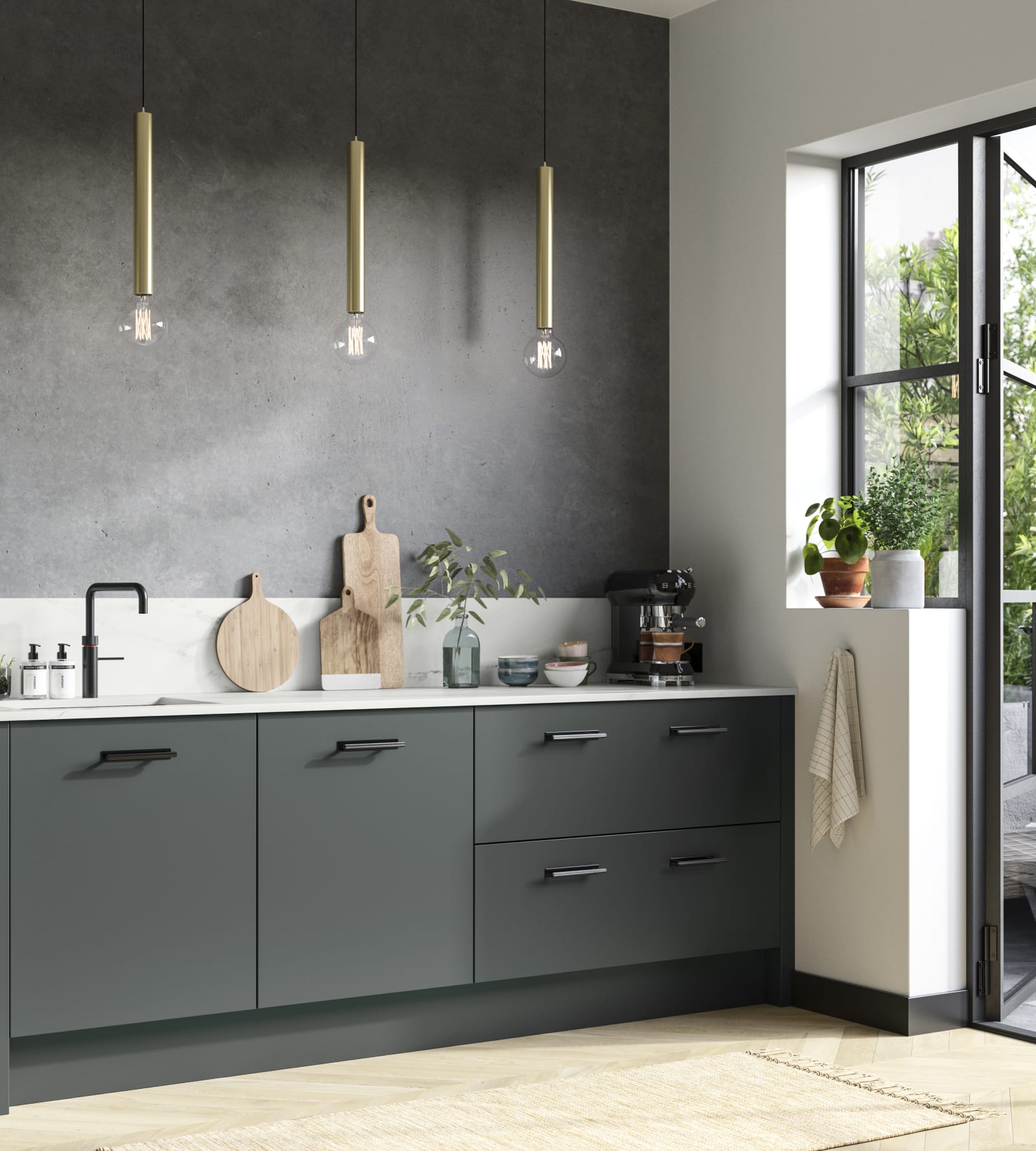

The short answer is - it depends. While the golden triangle is one of the simplest and best design rules to follow, we understand that it’s not for everyone. These days, kitchens have evolved to be multifunctional parts of the home.
Additionally, you may need a bespoke design that prioritises appliance ergonomics to accomodate everything you need.
Every kitchen should be unique - just like you, your family and your lifestyle are.
If you need help with making your small kitchen work, book a Design Consultation with one of our Magnet kitchen experts.
We can discuss the possibilities of a working triangle in kitchens with limited room, as well as other design alternatives.